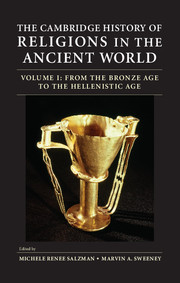Book contents
- Frontmatter
- Contents
- List of Figures and Maps
- List of Contributors
- List of Abbreviations
- Acknowledgments
- Introduction to Volumes I and II
- Introduction to Volume I
- Part I Mesopotamia and the Near East
- Part II Egypt and North Africa
- Part III Greece and the Eastern Mediterranean
- Part IV The Western Mediterranean and Europe
- Suggestions for Further Reading
- General Index
- Index of Citations
- Frontmatter
- Contents
- List of Figures and Maps
- List of Contributors
- List of Abbreviations
- Introduction to Volume II
- Part I Iran and the Near East
- Part II Egypt and North Africa
- Part III Greece and Asia Minor
- Part IV Italy, Roman Gaul, and Spain
- Suggestions for Further Reading
- General Index
- Index of Citations
- References
Introduction to Volumes I and II
Published online by Cambridge University Press: 05 October 2013
- Frontmatter
- Contents
- List of Figures and Maps
- List of Contributors
- List of Abbreviations
- Acknowledgments
- Introduction to Volumes I and II
- Introduction to Volume I
- Part I Mesopotamia and the Near East
- Part II Egypt and North Africa
- Part III Greece and the Eastern Mediterranean
- Part IV The Western Mediterranean and Europe
- Suggestions for Further Reading
- General Index
- Index of Citations
- Frontmatter
- Contents
- List of Figures and Maps
- List of Contributors
- List of Abbreviations
- Introduction to Volume II
- Part I Iran and the Near East
- Part II Egypt and North Africa
- Part III Greece and Asia Minor
- Part IV Italy, Roman Gaul, and Spain
- Suggestions for Further Reading
- General Index
- Index of Citations
- References
Summary
Defining Ancient Religion
“Religion” is not a native term; it is a term created by scholars for their intellectual purposes and therefore is theirs to define. It is a second-order, generic concept that plays the same role in establishing a disciplinary horizon that a concept such as “language” plays in linguistics or “culture” plays in anthropology. There can be no disciplined study of religion without such a horizon.
Any effort to define religion in the ancient Mediterranean world is constrained from the very outset by the absence of a single-word equivalent in the ancient languages. The English word “religion” does not convey the same meaning as the Latin word from which it is derived. Religio is “a supernatural feeling of constraint, usually having the force of a prohibition or impediment” or “a positive obligation or rule.” This latter sense is reflected in the importance attached to required ritual among the Romans, who generally associated it with active worship according to the rules. Christian authors were ambivalent about the suitability of the word to their own beliefs and practices. In the third century, the Christian apologist Lactantius continued to use the word religio to describe the tie between god and man. But Augustine later found the word problematic because it could also refer to an obligation owed to another human or to a god or gods. Hence, Augustine wrote, using the term religio “does not secure against ambiguity when used in discussing the worship paid to God”; and so it was possible to employ this term only by abolishing one meaning of the word, namely, the observance of duties in human relationships.
- Type
- Chapter
- Information
- Publisher: Cambridge University PressPrint publication year: 2013
References
- 1
- Cited by

